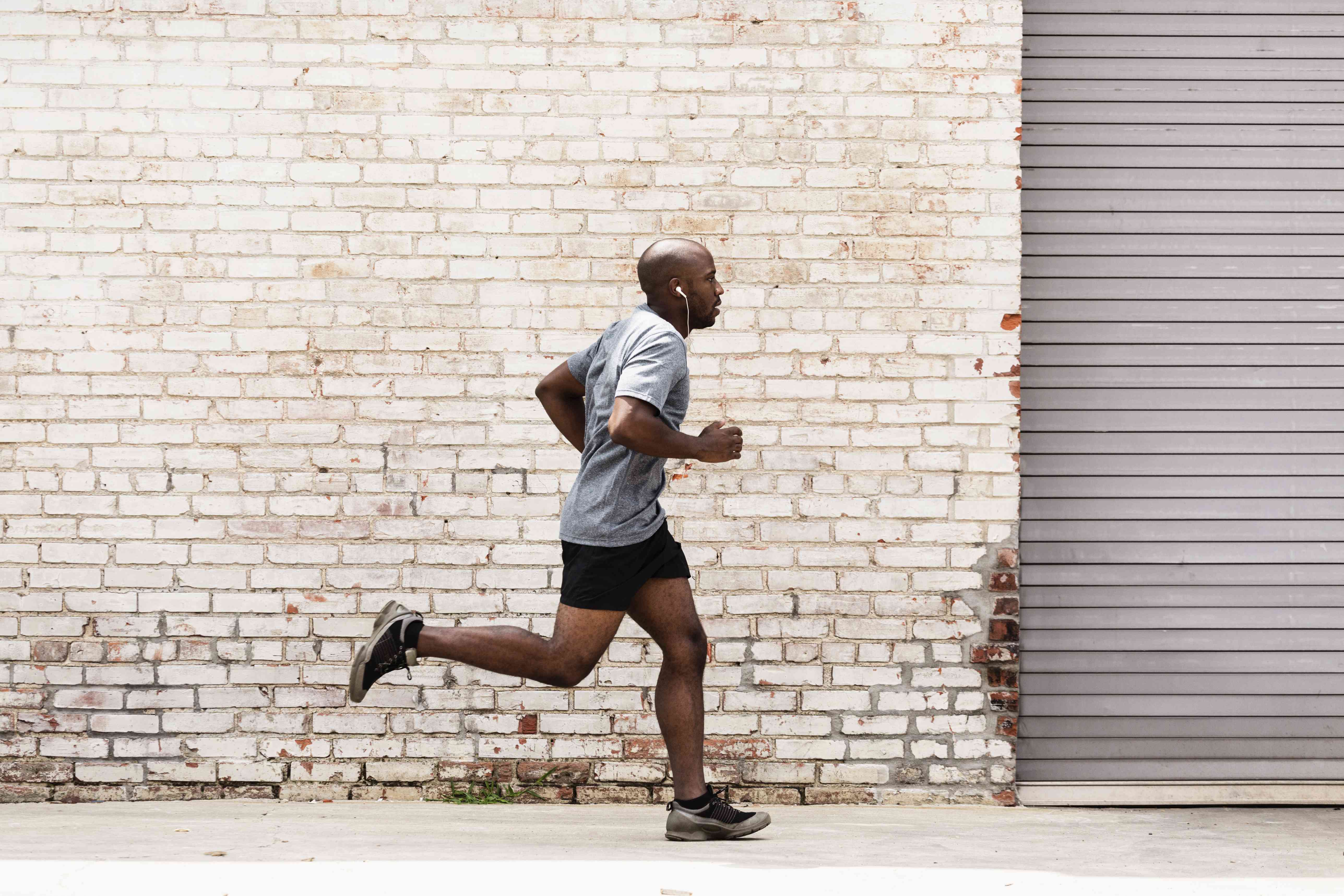What Is Runner's Face and How Can You Avoid It? Experts Weigh In This cosmetic condition may occur more in distance runners due to increased weight loss and the effects of sun exposure

Runner’s face is a term used to describe changes in the facial appearance that some runners may experience over time, including leathery, saggy, aging, lean, and tired-looking skin
- Runner’s face is a term used to describe changes in the facial appearance that some runners may experience over time, including leathery, saggy, aging, lean, and tired-looking skin.
- This cosmetic condition may occur more in distance runners due to increased weight loss and the effects of sun exposure.
- Experts recommend focusing on hydration, wearing sunscreen, and practicing healthy lifestyle and skincare habits to minimize the appearance of runner’s face.
While running is clearly one of the most popular cardio workouts, it may impact aspects of your health—like your skin—in ways you didn’t anticipate.
The activity offers numerous health benefits for your brain, heart, and body. Running can improve cardiovascular health, strengthen bones and joints, help with weight management, and reduce stress and anxiety.
However, according to Gerald Imber, MD, a board-certified plastic surgeon based in New York, this form of movement may also impact the way you look.
In a TikTok video with more than 3.3 million views, he cautioned that while it’s perfectly fine to run a little bit every day or run a couple of miles a few times a week, it’s important to note that running not only takes a toll on your body, it can also accelerate aging and affect the appearance of your face.
“Have you ever seen a long-distance runner, long-time runner that didn’t have a gaunt, old face? That’s what happens,” Dr. Imber explained. “In addition to the gaunt old face, your knees go, your ankles go, your back goes…”
What he is referring to is known as “runner’s face.” While developing runner’s face is not a certainty for all long-distance runners, it’s worth being aware of and understanding what you can do to minimize the condition.

Getty Images / Roberto Westbrook
What Is Runner’s Face?
Runner’s face is a term used to describe characteristic skin changes in the face that many long-distance and outdoor runners may experience over time, Richard Westreich, MD, a double-board certified facial plastic surgeon specializing in cosmetic, reconstructive, eyelid, and nasal surgery, in New York, told Health.
Some facial characteristics of runner’s face include leathery, thick, sagging, wrinkly, and tired-looking skin along with sunken eyes and an overall gaunt appearance.
How Does Running Cause Runner’s Face?
While some people may associate running with the facial characteristics of runner’s face, there is no evidence to support that this type of movement, including the act of bouncing up and down actually causes the skin to sag or appear aged, Susan Massick, MD, a board-certified dermatologist at The Ohio State University Wexner Medical Center, told Health.
“It’s an urban myth to associate running with skin sagging—the physical activity of running itself is not causing the texture or the elasticity of your skin to change,” she continued.
Instead, changed facial shape or skin texture can be attributed to a combination of increased weight loss or low body mass index (BMI) and sun damage from chronic sun exposure, Dr. Massick explained.
Long-distance running and other forms of exercise can lead to weight loss and lower body fat, however, with weight loss sometimes comes the loss of plumpness and structure in the face.
Running outside, especially for longer periods of time, exposes the face to harmful UV rays. If you run outside without any sun protection, it can lead to wrinkles, sun spots, discoloration, sagging, or thickened skin.
“When you lose volume, you have extra, loose skin to give a sagging appearance,” Dr. Massick noted. “Long-term sun exposure can leave your skin looking dull, leathery, and less vibrant that looks aged.”
What Can I Do to Minimize and Avoid Runner’s Face?
If you love to run, there are many things you can do to reduce the appearance of runner’s face, Dr. Westreich explained.
“Moisturize, wear sunblock, and hydrate after your runs,” he recommended. “These can help with the maintenance of skin tightening.”
Here are other precautions you can take to minimize the appearance of runner’s face:
- Wear sunscreen daily:Wear broad-spectrum sunscreen with an SPF of at least 30 or more to protect your skin from harmful UV rays and ultraviolet light exposure when running outdoors. Consider sweat and water-resistant sunscreen and try to reapply every two hours.
- Avoid running in the sun: If you can, try to run during times when the sun is the least strongest, such as, in the early morning or evening. Avoid running during peak intense sun hours from 10 AM to 3 PM. If this isn’t possible, try running on a route or path that is shaded with trees or buildings.
- Apply moisturizer every day:Use a moisturizer in the morning and at night to keep your skin hydrated and to help maintain its elasticity.
- Wear proper sun protection:Besides applying sunscreen, you can wear wide-brim hats, sunglasses, and other sun-protective clothing during your run. This will add additional protection to your face, ears, neck, and skin against UV rays.
- Avoid smoking:Smoking can damage your skin and contribute to premature aging.
- Have a healthy diet:Eating a healthy diet that contains antioxidants and plenty of nutrients like leafy greens, beets, broccoli, and berries can help support healthy skin and improve cellular regeneration.
- Stay well hydrated:Drink plenty of water, especially after you exercise, to keep your skin hydrated and to maintain your skin’s moisture and elasticity.
“Exercise in moderation, protect your skin from the elements, and maintain a well-balanced diet and healthy lifestyle,” Massick emphasized. “These are keys to maintaining skin health and enjoying your running routine.”
This story originally appeared on: Health News - Author:Alyssa Hui


















